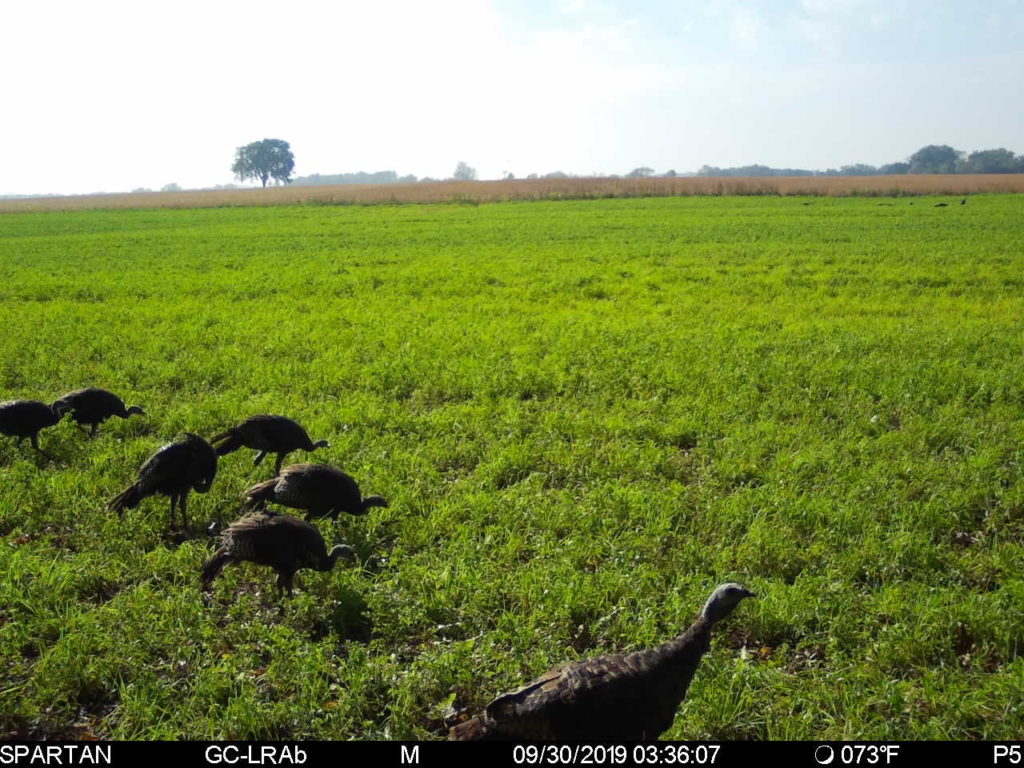Wild turkey scouting with trail cameras starts now

To be honest, I started scouting turkeys with trail cameras mostly because I wanted to make sure my little girls would hear plenty of gobbling when they hunted with me. I knew that we’d only get a couple of hours at most in the blind before they’d be snoozing or ready to go home, so I wanted to put us into the action as much as possible.
What I didn’t realize is that after one spring of running cameras in the pre-season I’d come to understand how predictable turkeys really are. In the fall, they run a feeding circuit that is pretty obvious if you spend as much time in the deer stand as I do. I didn’t realize that rule holds true in the spring as well. At least in the early spring.
There are two ways to look at a trail camera strategy for turkeys. The first is to just tell figure out when and how often birds are using your favorite spot. This is usually a field edge or a food plot, and a camera will clue you into whether you need to sit for a couple hours in the morning or put in a longer day.
The other is to figure out where the birds are beyond the obvious food sources. This is my favorite because it involves old logging roads, small clearings in the woods, and spots that don’t typically look like good all-day setups. When you find a turkey travel route in the woods and realize, through cam images, that birds are filtering through every couple of hours, your confidence in that spot grows and you can develop an informed hunting plan.
What’s even better? The birds moving through those areas are usually very callable because you’re already where they want to be, and where they expect other birds to be. And, unlike on a 100-acre picked cornfield, they usually need to get a lot closer to see your decoys and that means they are already in trouble.
There might be an even better third reason to throw up a camera or two right now; it’s fun and there isn’t much else to do in the next month, so why not?
You may also like
-
The Final Gobble
-
High country hunting expert, TUO ambassador, and television host Kurt Belding offers advice on hunting Merriam’s wild turkeys.
-
DNR Encourages Kids To Participate In 2025 Youth Turkey Hunt April 12-13
-
Manitowoc County Fish & Game Prot. Assn. recently donated $500 to the Friends of the Branch River Watershed
-
DNR Learn To Hunt Bear Program Seeks Applicants And Instructors
